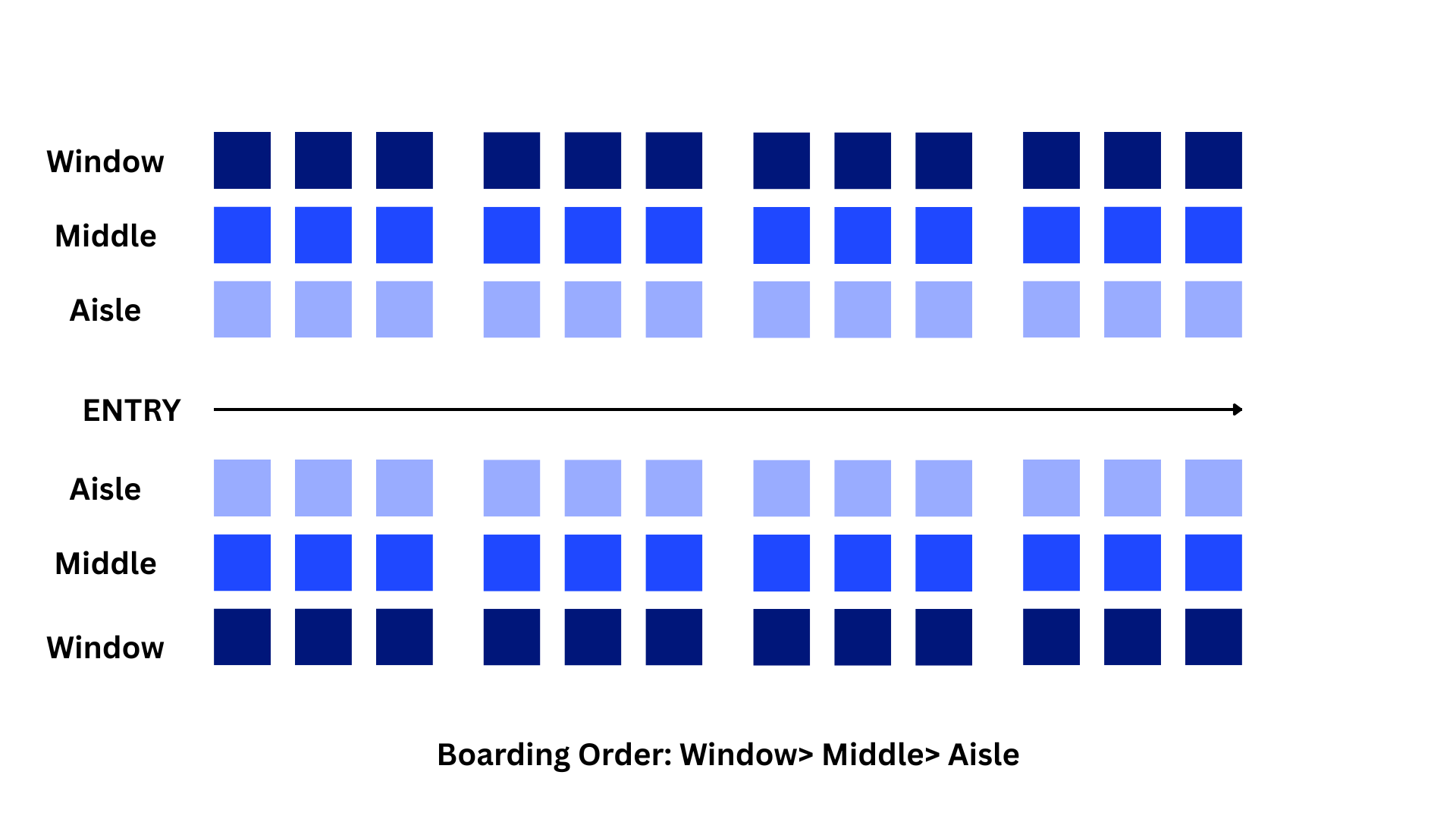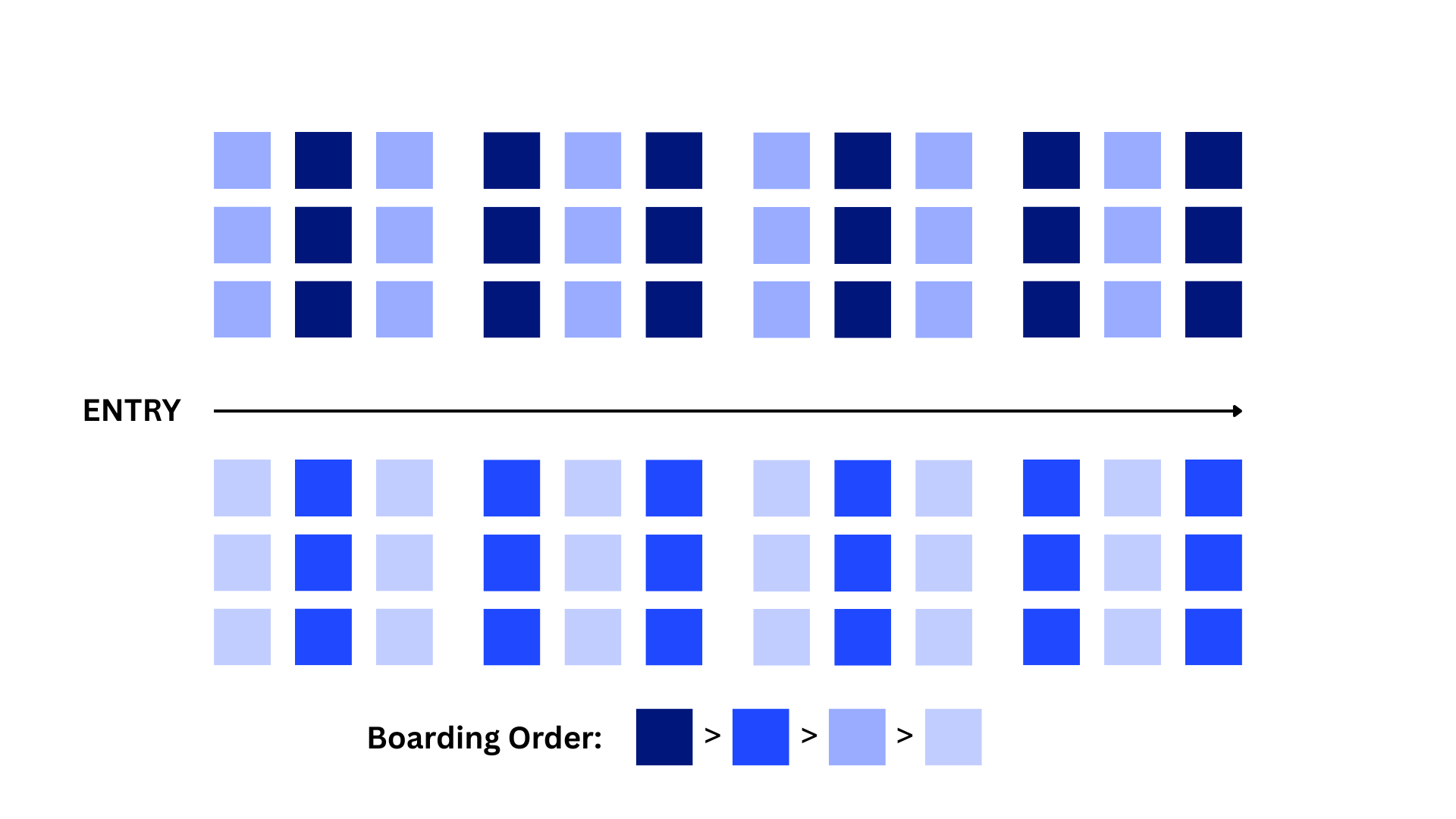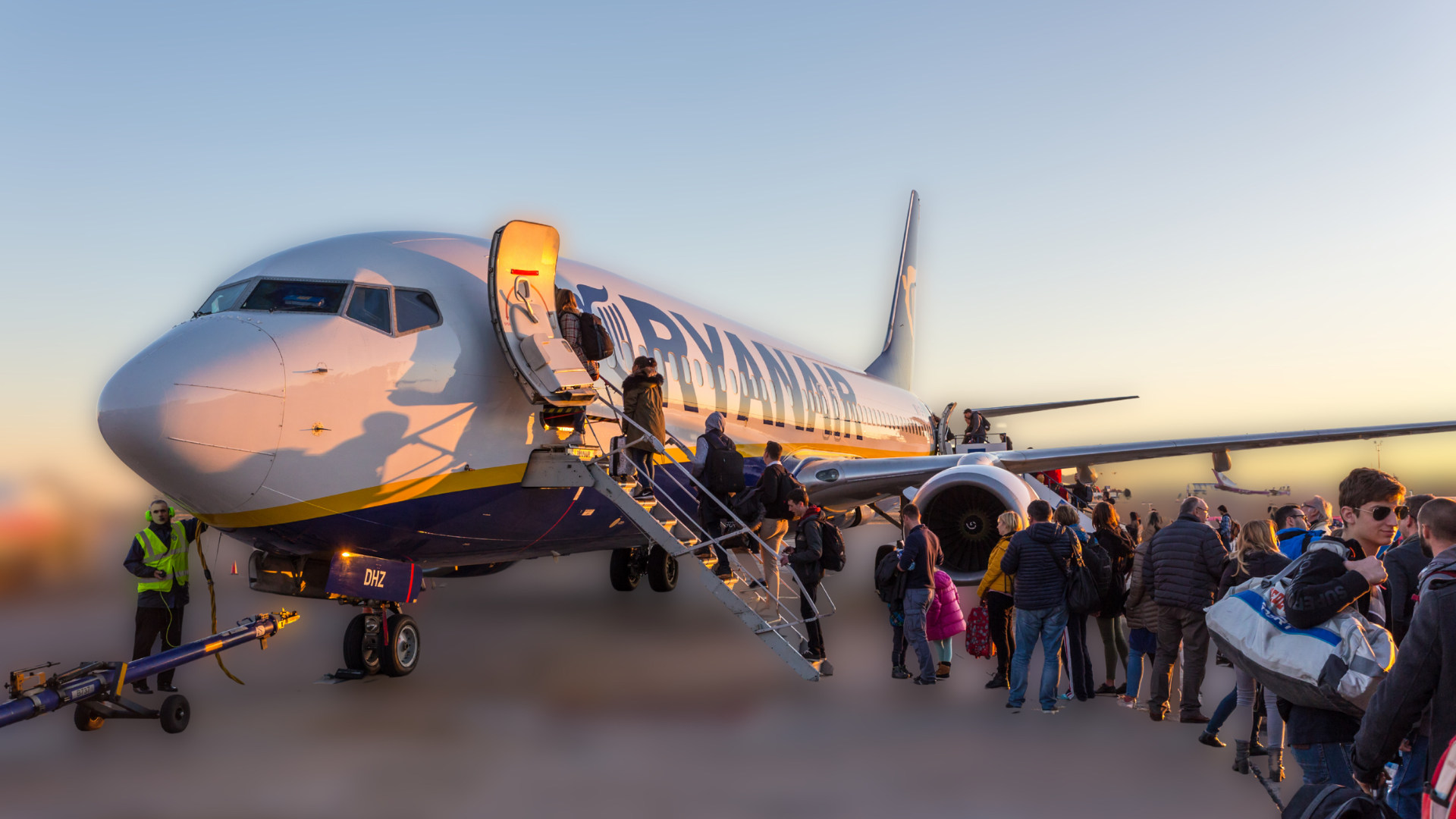Here's why the Airlines won't Adopt the Best Way to Board Passengers
Airline boarding often feels chaotic, but there’s real science behind it. From back-to-front to the Steffen method, here’s why the “perfect” system exists on paper but never makes it to the gate.

Recently, I watched a video by CGP Grey on YouTube. It was about the different methods airlines could use to board passengers onto an aircraft. Now, this video is over six years old, but what struck me was just how relevant it still is today. The chaos of boarding hasn’t changed much: crowds forming at the gate, the endless shuffle down the aisle, and the mad rush for overhead bin space. Despite all the technology we’ve added to flying, this one part of the journey still feels stuck in the past. Curious to know why, I did some snooping around, and it turns out the way airlines board us is far more fascinating (and sometimes frustrating) than it seems. So, buckle up, here’s what you should know.
CGP Grey's Video
WHAT ARE THE DIFFERENT BOARDING METHODS?
Everybody’s been stuck in this before: you’re in a long line at the gate, waiting to get in, everyone’s trying to stow bags, shuffle past window seats, etc. Airlines try various “boarding groups” to organize this chaos. Let's look at some common schemes:
BACK-TO-FRONT
This method is probably the one which makes the most sense, but ironically it's one of the least efficient. The idea seems logical; start by boarding passengers seated at the rear of the plane, then gradually move forward row by row. In theory, this should reduce aisle congestion since those sitting in the back won’t have to squeeze past people already seated up front. In practice, though, it often creates massive bottlenecks. Everyone in the same zone ends up crowding into the same part of the aisle, waiting while passengers struggle with overhead bins or settle into their seats. Meanwhile, the rest of the plane sits empty, and boarding slows to a crawl. It feels orderly, but research shows back-to-front can actually be slower than random boarding!

FRONT-TO-BACK
The front-to-back boarding method flips the logic: passengers at the front of the plane are invited to board first, followed by those in the middle, and finally those seated in the back. This approach is often tied to airline perks: first-class, business, and priority passengers get on early, enjoy extra time to settle, and claim overhead bin space before the rest of the crowd arrives. While it caters well to premium flyers, it’s not great for efficiency. Having people at the front board first means those in the back have to shuffle past them, often getting stuck in narrow aisles while others are still stowing bags or buckling up. The result? A slow-moving line and frustrated passengers waiting to reach their seats. This is also the method most travelers, including myself, are most familiar with, because nearly every flight emphasizes “premium and priority boarding first”, even if it makes the process drag longer for everyone else.

WINDOW TO AISLE (WILMA)
The window-to-aisle boarding method, often called WILMA (Window, Middle, Aisle), is a clever way to cut down on one of boarding’s biggest headaches: the seat shuffle. By letting window-seat passengers board first, followed by middle seats, and finally aisle seats, airlines avoid the awkward dance of people climbing over each other to reach their spots. This system spreads passengers more evenly throughout the cabin and keeps the boarding line flowing since fewer people are blocked waiting for someone else to move. It doesn’t completely solve the overhead bin traffic jam, but compared to front-to-back or back-to-front, WILMA feels smoother and noticeably quicker. Some airlines have experimented with it, though it can take a little getting used to if you’re used to the more traditional “zones and rows” calls.

STEFFEN METHOD
The Steffen method, created by astrophysicist Jason Steffen, is often hailed as the most efficient boarding strategy ever designed. In its perfect form, passengers are boarded in a highly specific order: starting with window seats in every other row at the back, then alternating rows and sides of the plane, and eventually moving forward through middle and aisle seats. This allows multiple people to stow their bags and sit down simultaneously without blocking each other, cutting boarding times dramatically in simulations. Of course, the catch is that it’s way too complicated to use in real life. That’s where the modified Steffen method comes in: it simplifies the process by grouping passengers into broader categories, like back-to-front window seats, then middle seats, then aisles. While not as lightning-fast as the perfect version, it captures most of the time savings while being far more practical to implement.

WHY DON'T AIRLINES ADOPT THE "PERFECT" METHOD?
If the math and simulations are so clear, you might wonder, why don’t airlines just adopt the fastest boarding method and be done with it? The short answer: people aren’t robots, and airlines aren’t just chasing efficiency. There are several factors at play.
Human behavior is the biggest hurdle. In theory, passengers could line up in a precise sequence like pieces in a puzzle, but in reality, people arrive late, want to sit with family or friends, or simply don’t follow instructions. Any system that’s too sophisticated quickly breaks down at the gate.
Then come the economic incentives. Airlines make a lot of money selling priority boarding as part of loyalty programs, premium tickets, and credit card perks. These “early boarding” privileges often run directly against the most efficient methods. Cutting them out might save a few minutes of turnaround time, but it would cost airlines valuable revenue streams.
There’s also the issue of passenger perception. Even if a method is faster, it might feel unfair or confusing. Telling a passenger they have to wait while someone behind them boards first could create frustration, even if the plane departs earlier. Airlines know that customer satisfaction often outweighs saving a couple of minutes.
Finally, there’s the cost of logistics. Implementing a perfectly efficient system would require reworking boarding passes, retraining staff, and creating stricter gate procedures, all of which adds complexity. From an airline’s perspective, shaving off two or three minutes of boarding time isn’t always worth the hassle if the current system “works well enough.”
So, while the “perfect” boarding method exists on paper, it’s unlikely we’ll ever see it in practice. In the end, airlines balance speed with psychology, revenue, and practicality. Boarding may never be flawless, but maybe that’s part of the flying experience we’ve all come to accept: a little bit of chaos before the journey really begins :)


Comments ()